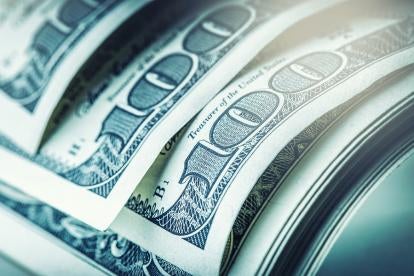On March 29, 2020, as part of a massive response to the economic distress inflicted upon businesses and working people in the United States due to the “shutdown” of the economy as part of the efforts to contain the impact of the coronavirus (“COVID-19”), Congress passed and the President signed the Coronavirus Aid, Relief, and Economic Security Act (“CARES Act”). One principal portion of the CARES Act established the Payroll Protection Program (“PPP”), under which the United States Small Business Administration (“SBA”) was empowered to approve loans (“PPP Loan”) by insured financial institutions (banks, credit unions, etc.) for up to $10 million.
The Paycheck Protection Program and Its Oversight
If a PPP Loan application was approved by the SBA, the SBA would guarantee the Loan, so that the lending bank or credit union, IF it complied with SBA requirements regarding that application, would bear no risk of loss if the Loan were not repaid.
In addition, the borrower of a PPP Loan would have the Loan “forgiven” (i.e., effectively the Loan became a Federal grant), IF the borrower COMPLIED with all the conditions applicable to obtaining a PPP Loan. The PPP program was focused on preserving jobs, as its name implies. Hence, at the outset, at least 75% of PPP Loan proceeds had to be used for payrolls and related benefits for employees. Congress subsequently amended this to increase flexibility by reducing the payroll plus benefits expenditure requirement to at least 60% of a PPP Loan proceeds. The PPP Loan program was originally limited to an aggregate of $350 billion but was later increased to a total of $670 billion. The PPP ended on August 8, 2020, after being extended from its initial termination date of June 30. Financial media reports and statements from the political leaders involved in attempting to negotiate additional COVID-19 relief legislation have proposed renewals and/or extensions of the PPP, but that is beyond the scope of this piece.
The PPP was created “out of whole cloth,” and was increased, modified, amended and extended – both by the SBA, with the involvement of the Treasury, and by further Congressional enactments. These developments underscored the accuracy of the oft-repeated observation, both in the media and by members of Congress, that administering the PPP was much like “flying a plane while trying to build it.” One can scarcely be surprised that:
-
Some applicants were ill-advised to seek a PPP Loan
-
Some applicants (such as Shake Shack, Ruth’s Chris, the L.A. Lakers, and some 1,400 others, who were seen as not needing the PPP financing) developed “borrowers remorse” and returned Loan proceeds
-
Some applicants were unscrupulous, if not criminal; and iv) many successful applicants will be subject to audits (by the SBA and others) and/ or investigation by various Federal authorities, or even the subject of private “bounty hunter” litigation in the form of qui tam proceedings under the False Claims Act
In qui tam litigation, a private citizen may sue in the name of the Federal government, and receive a portion of any recovery from anyone who has defrauded the government. It is also important to remember that a misstatement in a loan application submitted to an insured financial institution, let alone to a Federal agency, can be a Federal crime. On July 30, 2020, the Financial Crimes Enforcement Network, a Department of the Treasury, issued an advisory alerting insured financial institutions to look for potential indications of fraud in loans made under the CARES Act.
The CARES Act and the PPP Loan documentation authorizes the SBA to conduct an audit of a PPP Loan and requires a borrower to provide all requested documentation supporting the Loan application AND any application for loan forgiveness. Typically, these audits and related investigations will be carried out by the SBA Office of Inspector General. The required documentation must be retained for at least six years. If the SBA determines that a borrower was not eligible for a PPP Loan or that the borrower spent Loan proceeds for other than permitted purposes, the SBA may require repayment of any affected portion of the Loan, and, of course, may refer a particular case to appropriate authorities for further civil and/or criminal enforcement. When a PPP Loan borrower applies for Loan forgiveness, the lending financial institution has 60 days to review the application before submitting it to the SBA.
The CARES Act created a Special Inspector General for Pandemic Recovery (“SIGPR”) in the Treasury Department with the authority to investigate and audit a PPP Loan and to refer matters to the Department of Justice (“DOJ”) for a civil or criminal proceeding. On July 17, 2020, the SIGPR entered into a formal partnership with the United States Attorney for the Eastern District of Virginia to pursue civil and criminal investigations of financial misconduct and fraud related to the CARES Act. In addition, the Criminal Division of DOJ, as well as any of the several other U.S. Attorneys together with assistance from the Federal Bureau of Investigation may institute investigations and, as deemed appropriate, civil and/or criminal proceedings where financial misconduct or fraud is detected. Other Federal law enforcement agencies may also be involved in “policing” these Loans. So, for example, the Division of Enforcement of the Securities and Exchange Commission has sent information requests to public companies and securities firms concerning the qualifications of those entities to receive PPP Loans. As a former Federal prosecutor quoted in the financial press on May 12, 2020, observed, “The Justice Department … seems primed to produce some scalps for the public”.
On May 5, 2020, the DOJ announced the first criminal charges for filing allegedly fraudulent PPP Loan applications. Those developments continue apace, with ever more audits, investigation, charges, and prosecutions. The financial press reported – as of August 14, 2020 — that the DOJ has charged at least 50 persons with fraudulently obtaining PPP Loans, including one where the borrower used over $500,000 to speculate in naked options and an additional amount to fund a visit to a Las Vegas casino, meanwhile two other borrowers have been accused of using the loan proceeds to purchase Lamborghinis. The SBA and the Treasury announced that ALL PPP Loans of $2 million or more would be subject to an audit. The SBA continued throughout the life of the PPP program to issue related administrative “guidance” in the form of Frequently Asked Questions, one of the most significant of which is FAQ 46 issued on May 13, 2020. FAQ 46 establishes an administrative presumption that:
“Any borrower that, together with its affiliates, received PPP loans with an original principal amount of less than $2 million will be deemed to have made the required certification concerning the necessity of the loan request in good faith.”
But this is an agency presumption, which the SBA notes in FAQ 46 is intended to conserve SBA resources – the FAQ does not have the force of a “safe harbor” under the CARES Act or applicable regulations. Indeed, the financial press has reported that PPP Loans as small as $33,000 have been the subject of investigation (and interrogation) by Federal authorities, including in one case, by armed Secret Service agents. Accordingly, a PPP Loan borrower should “expect” the need to demonstrate that their Loan application AND use of Loan proceeds fulfills the standard for qualifying to receive a PPP Loan, and if Loan forgiveness is sought, would be eligible for such forgiveness.
Establishing Need: Required Borrower Certifications in PPP Loan Application
The CARES Act requires that an applicant for a PPP Loan MUST CERTIFY on the Loan application that the Loan funds “…are necessary to support the ongoing operations [of the applicant].” Indeed, SBA FAQ 31 issued April 23, 2020, begins by stating “… all borrowers must assess their economic need for a PPP Loan under the standard established by the CARES Act PPP regulations…”
The required CARES Act Certification involves several key factual matters:
-
First, the applicant must carefully determine exactly what are the “ongoing operations” of the applicant
-
Second, the applicant must be in a position to demonstrate that the financing is “necessary”
-
The determination of “ongoing operations” should include consideration of the impact of at least any special or short-term projects which may not qualify as “ongoing,” any planned disposition or cessation of any part of the business; any COVID-19 related adjustments required to continue in business
-
The determination of “necessary” should take into account at least: the actual costs of operations without considering the impact of COVID-19; the reasonably projected costs of maintaining “ongoing operations” during COVID-19; the availability, if any, of alternative sources of financing; and the possible utility of restructuring under State or Federal insolvency laws
Document Review and Consultation with Experienced Business Law Counsel
A borrower should carefully review the financial worksheets used in connection with the assessments required for certification of the borrower’s necessity to apply for the PPP Loan, including any worksheets produced with the assistance of the borrower’s accountant and/or another financial advisor. To the extent any short-comings could be perceived in these records, the borrower, again together with advisors, should expand and enhance these worksheets, so that the borrower’s assertions in its PPP Loan application are clearly supported. This is not only the basis for obtaining the Loan, but it is also substantial evidence that the borrower has met the “good faith” requirement emphasized in SBA FAQ 46 noted above.
In addition, best practices of good governance make it both wise and appropriate to periodically review:
-
The design of the records set up to document the uses, including dates of expenditure, of Loan proceeds, employee salaries and benefits, and all other expenses funded by Loan proceeds
-
An accounting of the actual expenditures of Loan proceeds
-
Any changes in the number of employees and any change in hours worked or salaries paid
-
Any situations involving an employee decision to terminate his/her employment with the borrower
For larger organizations that borrow a PPP Loan (the regulations set the headcount eligibility at 500 full-time employees), these reviews may be accomplished by periodic briefings for the senior management and/or governing board of the borrower.




 i
i


